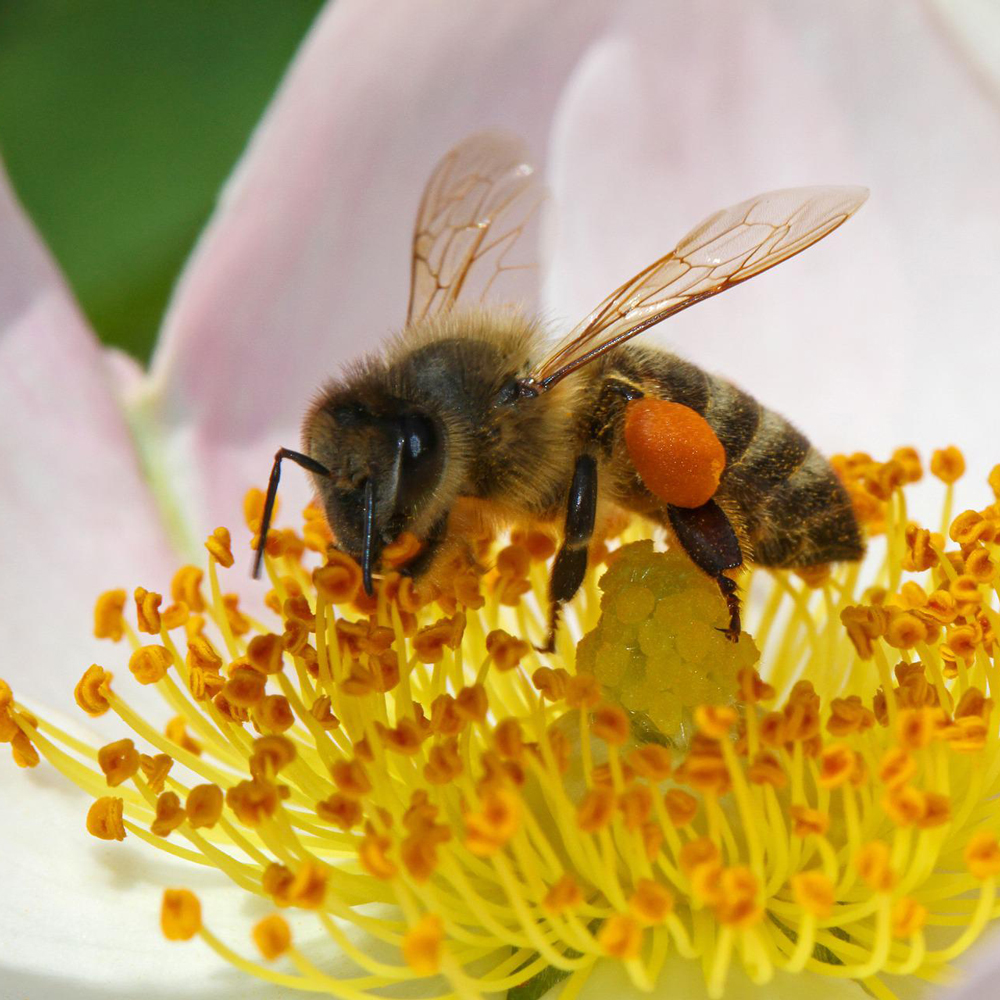Your cart is currently empty!
Honey Bees
A honeybee “visits” an average of 7,000 flowers a day, playing a huge role in pollinating flowering plants, some of which are food for people, too. The honeybees and the remaining 2,500 pollinators face various challenges and threats: poisoning, relocation of their habitats and a lack of a variety of food in the wild – to name a few – all caused by human activities.
The honeybee is known for the following: it collects nectar from the plants and delivers it to the hive, then processes it – in order to obtain our so-beloved honey. In addition to nectar, the bees bring pollen to the hive, known as bee pollen product. When a bee stores bee pollen in the wax honeycomb, it goes through lactic acid fermentation and the so-called Bee Bread is created (obtained) – yet another very popular bee product. In addition to nectar and pollen, bees also collect resins. The latter are secreted from some species of plants, and bees collect it, mix it with pollen and wax, and the final product is bee propolis (glue), used for covering/plugging holes in the hive, as well as lining the entire hive with a thin layer from the inside in order to protect the hive from the growth of spores of diseases and microorganisms. The beeswax we so highly value and use for our wax candles is produced by the bees themselves, by a special gland of theirs. Bees use beeswax as a building material for constructing their hexagonal cells where they raise larvae or store food supplies.

